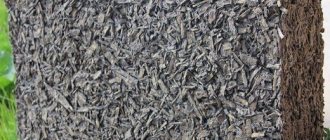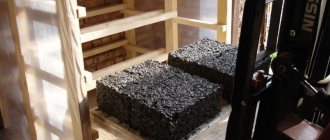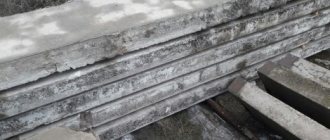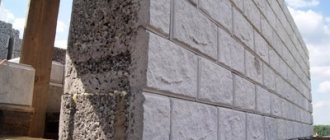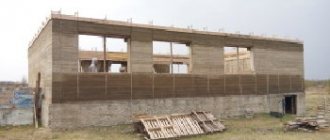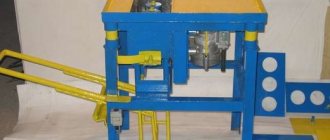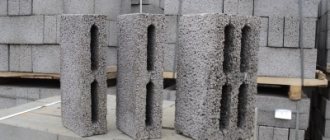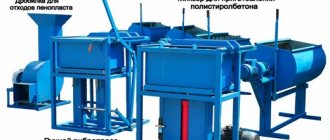Elements of load-bearing structures made of aerated concrete are actively used in modern construction. Durable and lightweight blocks replace wood and brick where it is necessary to speed up the pace of project development or optimize the budget. A business plan for the production of blocks can be developed on the basis of initial knowledge of entrepreneurship and technology for manufacturing materials for load-bearing structures. Inexpensive equipment, easy-to-learn technology and quick payback are attracting more and more beginning entrepreneurs.
To open your own production you will need a business plan and some initial capital
Necessary documents for the production of building blocks
According to rough estimates, the cost of producing materials for load-bearing structures is about 500,000 rubles. In ready-made production, the expanded clay block is very cheap. At the same time, investments alone are not enough. When starting a business, it is necessary to take into account a number of legal issues, including the choice of the status of the future enterprise.
Working in a shadow business may bring the expected results, but the number of clients will be minimal. In addition, supervisory authorities may be interested in an illegal enterprise. Therefore, a business plan for the production of heating blocks must include a clear development concept, taking into account correct design in accordance with the current legislation of the Russian Federation.
Before starting a business, you need to complete the relevant documents
Considering the modest turnover at the development stage of the enterprise, you can opt for registration as an individual entrepreneur. These are the minimum costs for opening, designing and maintaining administrative and working resources. Of the two types of simplified tax system, the optimal one will be “Income minus expenses”, taxed at a rate of 15%. Considering that the business plan itself for the production of wall blocks will cost free, legal registration in general will require about 10,000 rubles.
What you will need:
- Application for registration as an individual entrepreneur. If you don’t have time, you can send an application with attachments by mail;
- Pay the state fee for starting a business (800 rubles);
- Select the economic activity code corresponding to the line of business. Among the OKVED documents that the business plan for the production of wood concrete blocks will contain, group 23.61 and its subtypes should be indicated;
- If the activity is planned to be developed with borrowed funds, care should be taken to draw up a business plan, as it will need to be submitted along with the loan application;
- A lease agreement or document confirming ownership of real estate.
Since the business of producing building blocks is potentially harmful, you will need to obtain permits from regulatory authorities before starting the line. You will need to contact the Sanitary and Epidemiological Station, Rospotrebnadzor and the fire service with plans for the placement of equipment and storage locations for finished products.
Compositions for the manufacture of wall stones
| No. | Durability grade of stone for compression | Type of concrete | Concrete grade | Volumetric mass of dry concrete kg/m3 | Material | Consumption of materials (dry) per 1 m3 | |
| by weight, kg | by volume, m3 | ||||||
| 1 | 75 | Sand concrete | M200 | 1970-2020 | Portland cement M400 Quartz sand Mk=2.0-2.5mm Water | 320 1650-1700 160 | 0,26 1,13 0,16 |
| 2 | 50 | Expanded clay concrete on quartz sand | M150 | 1430-1590 | Portland cement M400 Expanded clay gravel, size 5-10mm (G=700-800 kg/m3) Quartz sand Mk=2.0-2.5mm Water | 230 600-760 600 190 | 0,18 0,91 0,40 0,19 |
| 3 | 50 | Cinder concrete | M150 | 1650-1750 | Portland cement M400 Fuel slag (G=1100-1200 kg/m3) Water | 250 1400-1500 200 | 0,2 1,25 0,20 |
| 4 | 50 | Ash and slag concrete | M150 | 1400-1600 | Portland cement M400 Fuel slag (G=1100-1200 kg/m3) Ash (G=800-1000 kg/m3) Water | 200 650-700 550-700 280 | 0,16 1,58 0,70 0,28 |
| 5 | 50 | Concrete on crushed limestone | M150 | 1870-1970 | Portland cement M400 Crushed limestone 0-10mm (G=1300-1400 kg/m3) Water | 220 1650-1750 150 | 0,18 1,25 0,15 |
| 6 | 35 | Concrete on crushed stone from brick scrap | M100 | 1520-1670 | Portland cement M400 Crushed stone from broken brick, 0-10mm (G=1100-1200 kg/m3) Water | 170 1350-1500 250 | 0,14 1,25 0,25 |
| 7 | 35 | Expanded clay-ash concrete | M100 | 1270-1470 | Portland cement M400 Expanded clay gravel 0-10mm (G=700-800 kg/m3) Ash (G=800-1000 kg/m3) Water | 170 600-700 500-600 320 | 0,14 0,87 0,61 0,32 |
| 8 | 35 | Ash-sand concrete | M100 | 1710-1780 | Portland cement M400 Ash (G=800-1000 kg/m3) Quartz sand Mk=2.0-2.5mm Water | 200 280-350 1230 230 | 0,16 0,35 0,82 0,23 |
| 9 | 35 | Perlite concrete on quartz sand | M100 | 1340-1355 | Portland cement M400 Perlite sand (G=200-220 kg/m3) Quartz sand Mk=2.0-2.5mm Water | 370 170-185 800 280 | 0,3 0,85 0,54 0,28 |
| 10 | 25 | Concrete on crushed tuff stone | M75 | 1220-1345 | Portland cement M400 Tuff fr.0-10mm (G=800-900 kg/m3) Water | 220 1000-1125 230 | 0,18 1,25 0,23 |
| 11 | 25 (solid stone) | Sawdust concrete on quartz sand | M35 | 1090-1115 | Portland cement M400 Wood sawdust. rocks (G=120-140 kg/m3) Quartz sand Mk=2.0-2.5mm Calcium chloride Water | 300 150-175 640 10 300 | 0,24 1,25 0,43 0,01 0,30 |
| 12 | 25 (solid stone) | Sawdust-lobeton | M35 | 780-910 | Portland cement M400 Wood sawdust. rocks (G=120-140 kg/m3) Ash (G=800-1000 kg/m3) Calcium chloride Water | 250 150-175 380-480 8 320 | 0,20 1,25 0,48 0,008 0,32 |
| Note: The compositions were selected using raw materials that meet the requirements of GOST; in the presence of materials with other characteristics, adjustments to the compositions are required. | |||||||
Business plan for cinder block production: requirements and choice of production site
The size of the area will be determined based on the arsenals of the selected equipment, its composition and individual units. If it is a fully automated block production line, it will occupy about 80 m². For semi-automatic production, which will be controlled by several operators, 50-60 m² will be enough.
When expanding production volumes, business will require new spaces. It will be possible to renegotiate the current lease agreement or move the construction of the blocks to a new larger premises
The production of building blocks from aerated concrete, wood concrete and other component compositions will require placement in an area that is safe for humans and the environment. A specialized industrial area or a vacant site outside the city is best suited.
It is immediately worth noting that the cost of equipment can vary in the range from 300 to 1200 thousand rubles. Therefore, the location for the production of aerated concrete blocks must be guarded or have means to restrict unauthorized access. Also, location outside the city is convenient for buyers, as they can easily drive up to pick up finished products.
If the business concept does not include strictly made-to-order work, it will be necessary to provide a storage area for manufactured blocks. Major renovations are not required at the location of the building block manufacturing business, however, cosmetic work will need to be taken care of during the presentation of the site. The equipment for a plant for the production of aerated concrete blocks is quite powerful, so there must be access to the power grid at the location. Also, at the place of work, it is necessary to ensure free supply of communications and drainage.
When choosing a construction site, you also need to pay attention to ensuring that the floor in the room is level, dry and clean.
Manufacturing process
Main part of the technological process
The production of aerated concrete blocks begins with mixing the raw materials. Considering that this building material has a porous structure and low weight, a fairly large number of finished elements are obtained from a small volume of sand, cement and lime.
For ease of presentation, we will divide the further process into several stages:
- Lime, water, cement and quartz sand are poured into a concrete mixer, where they are thoroughly mixed . After 5-10 minutes, a small amount of aluminum powder dissolved in water is added. This substance, having entered into a chemical reaction with lime, promotes the release of hydrogen. It is this gas that forms pores in the block ranging in size from 1 to 2 mm, which occupy the entire volume of aerated concrete.
- Immediately after adding the aluminum suspension, the mixture is poured into special molds, where it swells, increasing in volume several times.
- In order for the pores to be evenly distributed and the aerated concrete to harden faster, the forms are placed on a special table or platform, where the future aerated concrete is subjected to prolonged vibration loads.
- At the last stage, with the help of metal strings, irregularities are cut off from the top edge of the finished products, and the blocks are calibrated to the required size.
Advice! In order to quickly cut and calibrate aerated concrete, you can use special milling machines.
Autoclave processing
Equipment for the production of aerated concrete blocks also includes autoclave chambers. In them, hardened workpieces are subjected to 12-hour steam treatment at a temperature of 190 degrees Celsius and a pressure of 12 kgf/sq. cm.
After this procedure, aerated concrete acquires greater strength and a uniform structure, and also exhibits minimal shrinkage after completion of construction.
It can be used as:
- heat insulator;
- sound insulator;
- material for load-bearing walls.
By the way, the excellent energy-saving qualities of aerated concrete, which has an excellent thermal conductivity coefficient, allows you to build houses from blocks up to 400 mm thick without the use of additional heat-retaining materials (mineral wool, polypropylene foam, polystyrene foam).
Photo of an autoclave for aerated concrete
Non-autoclave method
When producing aerated concrete, it does not have to be autoclaved. But such material will be less durable and have worse characteristics.
| Index | Autoclaved aerated concrete | Non-autoclaved aerated concrete |
| Shrinkage, mm/m | 0,3 | 3 |
| Strength, kgf/sq. cm. | 28 | 10 |
Foam block production business plan: production equipment
Depending on the budget, a business owner can spend different amounts of money on the purchase of units. Optimal projects usually include an amount of 200,000 rubles. Everything will depend on whether a ready-made business line on building blocks will be purchased or a new conveyor will be assembled. In the second option, the entrepreneur will need to have good knowledge of the technological process. In this case, the profitability of producing heat blocks using our own assembly will be higher than those of a ready-made business.
What you need to buy:
- Concrete mixer;
- Vibrating table;
- Form kits;
- Forming pallets;
- Pallets for receiving finished products - roller tables;
- Peristaltic pump complete with foam generator and compressor.
This is what a standard concrete mixer looks like
Depending on the concept of concrete production, the owner may provide for the delivery and transportation of raw materials on their own. A used gazelle is quite suitable for these purposes. The cost of transport can approximately double the planned foam concrete production budget.
Advantages of slag concrete blocks
The composition of cinder block (as well as foam block) is truly unique:
- Cinder concrete blocks have excellent heat and sound insulation.
- Such blocks have sufficient strength and durability.
- Good savings on cement. So, to prepare 36 pieces, one bag of cement will be used.
- Current Russian legislation does not provide for mandatory certification of either the slag concrete material itself or the equipment with which it is produced. That is, there is no need for mandatory testing for safety and quality.
Hence the conclusion: cinder block is the most profitable material for construction on your site, because in this case the process is fast, economical and reliable.
Building block manufacturing technology
Standard production of durable forms for load-bearing structures requires adherence to a certain sequence. Particular attention in manufacturing technology is paid to the composition of the components from which the blocks will be produced. Depending on the chosen modification, the use of the resulting materials at one or another stage of construction will be determined. Despite the fact that expanded clay blocks are in demand among consumers, the market can often experience a change in current trends. For this reason, it is advisable to master several recipes in production.
The following components are used as raw materials:
- Cement. The basis of the block design. The business plan idea may include grade 400 cement. If you plan to switch to a lower quality, you will have to increase the amount of the main component and reduce the amount of other building materials;
- Filler. Expanded clay, slag, crushed stone, and residues (waste) from woodworking industries can be used. Depending on the selected material, the name of the finished product is usually determined;
- Plasticizers. To enhance the practical properties of the product, various additives are used in the production process, which make it possible to control the technical characteristics of load-bearing structures at the manufacturing stage;
- Water.
The technology for manufacturing building blocks in private production comes down to preparing a dry mixture, mixing it with water and other additives, molding and drying the finished products.
The finished substance is fed into a vibrating machine to shrink the solution, otherwise the block will not have the required qualities. After this, due to the operation of a special pressing device, the solution will be squeezed into molds for further drying. As the pallets are filled, the next ones are fed until the batch is finished.
In the case of gradual development of a new direction, you can start with small expenses. At the first stage of creation, one vibrating machine will be enough, which will calm the solution, bringing it to the required condition. By contacting one of the local cement factories, you can order a whole machine of a ready-made mixture of cement and gypsum in the required quantity.
Production technology
For casting standard concrete blocks from a sand-concrete mixture, the most primitive technology is most often used, which does not require significant capital investments and complex equipment. The technology for the production of concrete blocks is based on the principle of uniform hardening of the concrete mixture in natural conditions at normal air temperatures.
A model illustrating the process of preparing and hardening a concrete solution will be a description of the process of pouring the form of a foundation or monolithic slab:
- Preparation of the form;
- Preparation of concrete solution;
- Pouring the solution into the mold;
- Compaction of the solution;
- Shrinkage of the mixture;
- Removing formwork;
- Final drying of the mixture and set of concrete working hardness.
In principle, this scheme is quite suitable for pouring a large volume of concrete, but for a concrete block for building walls it is only partially suitable. The fact is that to form a regular rectangle with clear edges on the sides and a smooth surface on the outer edges, it is necessary to use a concrete solution with a minimum water content. Thus, crumbly concrete is obtained, which, when placed in a mold and subsequently compacted using vibration and press pressure, is knocked down into a dense mass capable of holding its shape.
The use of concrete with a high water content, on the contrary, does not entail the formation of a rigid shape, but the squeezing out of the mass of moisture, which is not able to withstand the rigidity given to it; it simply floats.
When preparing the solution, the order in which the components are added is observed: filler, cement, water, plasticizer.
Manufacturing technology involves optimizing the production process through the use of equipment for the production of concrete blocks in the form of a vibrating machine or vibrating plate. In the first case, the molded element is left to dry on the platform after removing the vibrating machine mold; in the second case, the silicone mold remains on the element until the drying process is completed.
Using a vibrating press, the following are formed:
- Solid wall block;
- Reinforced wall block with voids;
- Lightweight hollow wall block;
- Half block or half block;
Using a vibrating table and silicone molds, the following are produced:
- Facing block;
- Block imitating stone;
- Decorative tiles or elements for decorating facades, paths, fences.
However, the technological process itself will not be complete without the last stage, in which the remaining moisture evaporates from the concrete, and it gradually begins to gain its strength. Drying plays an important role, because in addition to the evaporation of moisture, a second equally important process also occurs simultaneously - the gradual hardening of cement.
For production under normal conditions, drying occurs at normal temperatures with a minimum daily amplitude of fluctuation, and for extreme conditions, for example, for temperatures below +5 degrees Celsius, synthetic additives and additives for concrete at low temperatures must be used.
To control quality and determine the readiness of blocks for transportation and use in construction, a standard scale for concrete strength gain is used - 3,5,7 days the form can be lifted and carried, on days 9-11 it can be stacked, on days 28 it can be used in construction.
Recruitment of employees
You can organize a business in the production of building blocks alone. It will be quite difficult to directly engage in the production of materials alone. Even a private small plant will require at least 2-3 people, so the business plan should include an expense item for wages and staff training. To work on semi-automatic equipment, short-term courses will be sufficient.
The optimal number of workers for the production of building blocks is considered to be 3 people. Operators can work in shifts, depending on the load provided by clients of a private plant. The fourth person in the company of employees will be a loader, who will combine work with the duties of a driver. Considering that an entrepreneur has the right to do accounting on his own, this can reduce costs. If you turn to the services of companies, then under the terms of a subscription fee, accounting operations will be clearly performed in the cloud service. It will cost about 3-5 thousand rubles.
Equipment for self-production
It is not difficult to make your own equipment for preparing mortar and forming a hollow wall block at home. It is enough to have skills in working with a welding machine and an angle grinder, and be able to correctly calculate and cut metal.
The shape for the block is a regular rectangle with dimensions:
- Height 200 mm;
- Width 200 mm;
- Length 400 mm.
The mold is welded from a sheet of iron 4-5 mm thick. And it is reinforced from the outside with a frame made of a corner or profile pipe. For a brick press for the production of concrete hollow blocks, it is better to use replaceable elements to form internal voids:
- for load-bearing structures, round with a diameter of 100 mm;
- for internal walls, multi-profile elements made of square pipes;
- for partitions and semi-blocks, rectangular elements made of several profile pipes welded into one element.
A standard electric motor with an eccentric mounted on a shaft is used as a vibrator.
A self-assembled vibrating press driven by an electric motor must be safe from electric shock - the motor must be attached to the body through a rubber gasket, the handles must have rubber protective elements, and the cable used must have double insulation of the current-carrying conductors.
Marketing and sales plan
When a location for a business has been chosen, equipment has been purchased and placed, and even the necessary components have been delivered, all that remains is to sell the finished product. It is not so easy to do this taking into account the current level of competition, however, given the existing promotion opportunities, it will be possible to sell a small batch within the first week.
Among the inexpensive and at the same time effective advertising tools is the placement of advertisements for the sale of small batches of blocks. The text may indicate the possibility of meeting the needs of construction projects for the construction of private houses and cottage groups. A good way to express yourself is through an electronic platform on the Internet. At first, it will be enough to create a business card website or landing page. If an entrepreneur is not very strong in these matters, he can turn to professionals or freelancers. The price of the service will be from 5000 rubles.
As a promotion in a phased concept, you can resort to free advertisements. Such services still work, especially in sections of regional newspapers. Of course, you will have to work hard on the advertising and promotion text: briefly talk about the production technology, available equipment, and the advantages of cooperation with this company. This is how you can achieve a quick return on investment.
Types of advertising that are still active today
While interest in the product is fueled by excellent quality and balanced prices, you can begin to increase production capacity. After testing the equipment, you can purchase an additional concrete mixer and prepare the mixtures yourself at your own factory. Processing of the next batch will be faster, and the product will already be within the average price offers in the niche. This is how you can at least achieve self-sufficiency or even make your first profit.
Necessary materials
For a building material, strength has always been one of the most significant qualities. But using only cement and sand will make the production of concrete blocks unprofitable; the blocks are expensive.
The way out of this situation is to use additional types of raw materials as fillers as the main materials for production. Such fillers make it possible to obtain products with additional qualities - lightness and reduced thermal conductivity.
To prepare concrete mortar the following are used:
- Cement grade 400 or 500;
- Natural filler;
- Plasticizers;
- Water.
Cement is preferable to grades 500 and 400; it is not only the most popular, but also the most suitable material for preparing the mortar formulation. All recipes recommended for preparing concrete are based on the proportions of this particular group of cement.
The filler used is:
- River or quarry sand;
- Crushed granite stone of small and medium fraction;
- Granite screening;
- Granular slag;
- Sawdust and shavings;
- Expanded clay;
- Products of processing of concrete products and broken bricks;
- Chemical fillers used for the manufacture of insulation;
- Blast furnace slag.
Preparation of a concrete mixture requires the correct dosage of cement and proportions of filler. For high-quality concrete wall elements of load-bearing walls, the following proportions are taken:
- Cement - 1 measuring part;
- Filler - 7-9 measuring parts;
- Water - 1/2 measured part of cement;
The plasticizer is not used under normal temperature conditions, when the air temperature is stably above +15 degrees. When the temperature drops, when drying in unheated rooms or outdoors, adding a plasticizer is desirable, but if the temperature does not drop below +5, it can not be used. At temperatures below +5, such a plasticizer must be used.
To obtain concrete, the use of a plasticizer must be as precise and dosed as possible. Most additive manufacturers recommend adding 5 grams per conventional block volume.
Where are these types of products required?
It is not for nothing that blocks are considered promising building materials, since their use allows one to obtain a number of invaluable advantages.
The use of this material allows for low-rise construction. This can be a residential building of up to 3 floors, a garage, a bathhouse, or other utility room. Using molds it is easy to build walls yourself.
Constructing a wall using building blocks
The blocks are distinguished by increased thermal insulation and sound insulation characteristics.
Low cost. Due to the low cost of components and the simplicity of the production process, concrete materials or foam blocks are characterized by low cost.
Possibility to set up production yourself. Equipment for the production of this type of building material is available for free sale. The production technology is not complicated.
